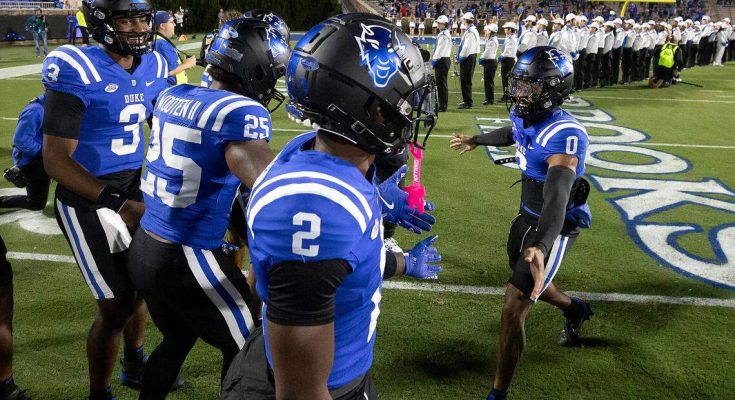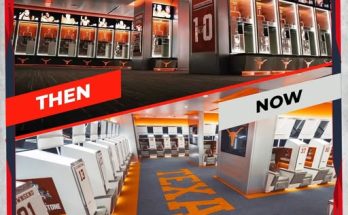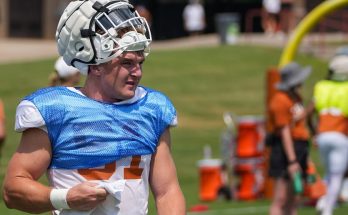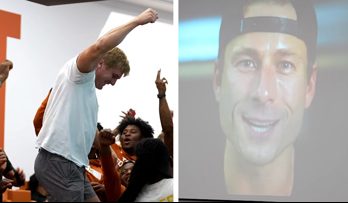For Duke football, the 2025 season was expected to mark a defining moment — a time when the Blue Devils could elevate their status from ACC contenders to national dark horses. That momentum, however, suffered a staggering blow when one of the team’s brightest defensive stars and All-ACC standouts suffered a brutal knee injury during spring practice. The injury, which initially sparked fear across the program, quickly became one of the offseason’s most significant storylines. Yet amid the uncertainty, what has emerged instead is a tale of grit, perseverance, and an athlete refusing to let adversity rewrite his destiny.
The defensive standout — who was instrumental in anchoring Duke’s rising defense last season — had been poised to build on his breakout year. With his name etched in the All-ACC first team and considered a legitimate NFL Draft prospect, his stock was trending upward at lightning speed. Coaches raved about his ability to diagnose plays before they unfolded, his footwork in space, and his relentless motor. He wasn’t just a player — he was a tone-setter, the kind of athlete who could shift a game’s outcome with a single explosive play.
Then came the injury. During a seemingly routine non-contact drill in April, the junior defensive back planted awkwardly on a pass deflection and immediately crumpled to the turf. The scene was eerily quiet. Teammates gathered around in concern, coaches rushed in, and the training staff moved with urgency. As he was helped off the field, his head buried in a towel, it was clear that this wasn’t a minor tweak. An MRI later confirmed what many feared: a torn ACL and partial meniscus damage in his right knee.
For most athletes, this kind of setback can be devastating, not only physically but mentally. The grind of rehab, the isolation from teammates, the creeping doubts about whether you’ll ever be the same — it all hits fast and hard. For Duke’s star defender, the news struck like a punch to the chest. Months of preparation, goals for the season, and potential dreams of turning pro were suddenly in question. “At first, I didn’t even want to talk to anybody,” he admitted during a summer interview. “I kept thinking, ‘Why now? Why me?’ I felt like everything I had worked for was being taken away in a second.”
But the story didn’t end there. Instead, it shifted into a narrative of resilience that has quickly become one of the most compelling tales in college football this offseason. From the moment surgery was completed, he attacked rehab with the same ferocity he brought to the field. Early morning sessions with Duke’s medical staff, followed by strength-building afternoons, became his new routine. It wasn’t glamorous — there were no roaring crowds, no highlight-reel tackles — but it was just as grueling and far more personal.
What surprised many around the program was how vocal and visible he remained. Rather than fade into the background, he became a daily presence at team practices, showing up on crutches, scooter, or later a knee brace, and offering guidance to younger players. He broke down film with position groups, served as an informal assistant coach, and even participated in team meetings with the defensive coordinator, giving input on schemes and matchups. “He never checked out,” said head coach Mike Elko. “Even when he couldn’t step on the field, he was there — encouraging, leading, and making an impact. That says everything about who he is.”
That leadership hasn’t gone unnoticed. Teammates have called him “an extension of the coaching staff” and “the emotional heartbeat of the defense.” One sophomore linebacker remarked, “He’s the reason I kept my head on straight when I was getting beat in drills. He believed in all of us, even when he had every reason to focus on himself.”
Medical updates over the summer brought promising signs. While a full recovery from an ACL tear typically ranges from 9 to 12 months, Duke’s training staff has expressed cautious optimism that he could return sooner than expected — possibly by late October or early November if no setbacks occur. Though no one within the program is rushing his timeline, the possibility of a late-season comeback has sparked hope across Durham.
More than just a physical recovery, the journey has also become a mental and emotional transformation. In candid moments, the defender has spoken about how the injury forced him to confront his identity beyond football. “When you’re an athlete at this level, everything you do is about performance. When that’s taken away, you have to look at who you are without the helmet,” he said. “I’ve grown more in the last few months than I ever thought possible. I’ve learned to be patient, to trust others, and to believe in the process.”
That maturity hasn’t gone unnoticed by NFL scouts, many of whom have continued to monitor his progress despite the injury. His All-ACC credentials from last season — 62 tackles, 4 interceptions, 11 pass breakups, and a fumble recovery returned for a touchdown — still resonate loudly. And now, his comeback story adds a new layer to his scouting profile: toughness, resilience, and intangibles that don’t show up on stat sheets. “Sometimes it’s not just about what a guy does on the field,” one AFC scout noted. “It’s how he handles adversity. This young man has shown he’s got the mental makeup to succeed at the next level.”
For Duke, his recovery has also galvanized the team’s locker room. Players speak openly about winning for him. “We’re playing this season with him in mind,” said senior defensive lineman RJ Oben. “We want to make sure that when he comes back, he’s joining a team that’s in the hunt, not one that gave up.”
That spirit has translated into a renewed defensive identity for the Blue Devils. Defensive backs who once played behind him are stepping up, using the example he set as motivation. The coaching staff has implemented more zone coverage packages to minimize the strain on the secondary and create turnovers through disguise — a strategy that owes much to the football IQ their sidelined leader continues to contribute.
Perhaps the most powerful symbol of his influence came during Duke’s annual Blue-White scrimmage. Though he remained in street clothes, he was invited to walk out with the team captains and given a standing ovation by the crowd. As chants of his name echoed through Wallace Wade Stadium, he fought back tears and placed a hand over his heart. “That moment meant everything,” he said. “It reminded me why I’m doing this. I’m not just coming back for myself. I’m coming back for my teammates, my coaches, and everyone who believed in me.”
In a sport where injuries often end seasons — and sometimes careers — the story unfolding in Durham is a rare one. It’s a reminder that setbacks don’t have to define athletes. How they respond does. And in this case, Duke’s All-ACC defensive star is choosing to write his own second act — one fueled by determination, heart, and an unwavering belief in what’s possible.
The road ahead is still uncertain. There’s no guarantee he’ll return this year, no assurance that his game will instantly return to All-ACC form. But what’s clear is this: he’s already made a comeback of a different kind. One rooted in leadership, personal growth, and the kind of inspiration that lifts entire programs. In a sport filled with highlight plays and fleeting glory, it’s these stories — the ones of grit and grace — that tend to endure the longest.
As Duke gears up for what could be one of its most pivotal seasons in recent memory, the spirit of their injured star defender looms large over every practice, meeting, and game plan. Whether he steps back onto the field this fall or next spring, he has already made his mark — not just as a player, but as the heart and soul of Duke football. And when that moment finally comes, when he sprints out of the tunnel with his teammates, fully healthy and fully whole, it will not just be a return — it will be a triumph.



